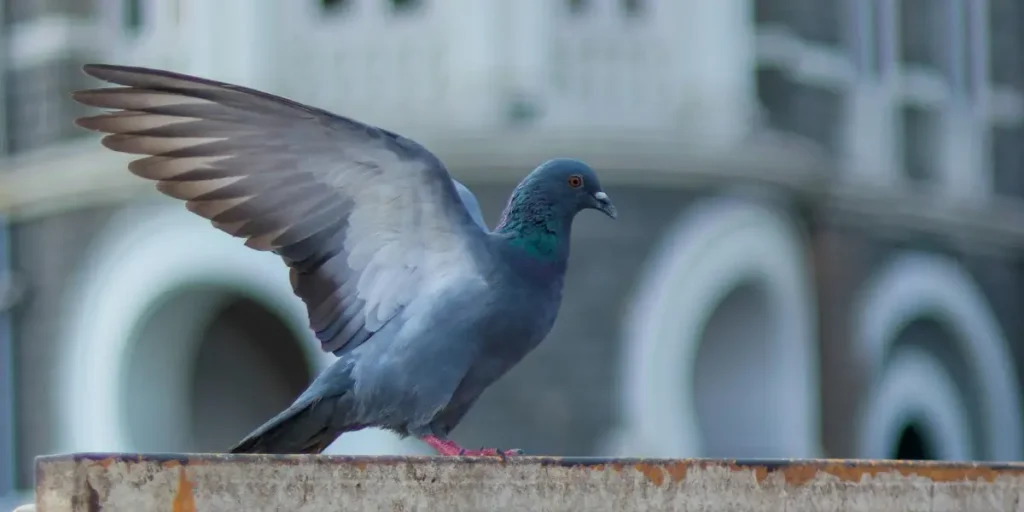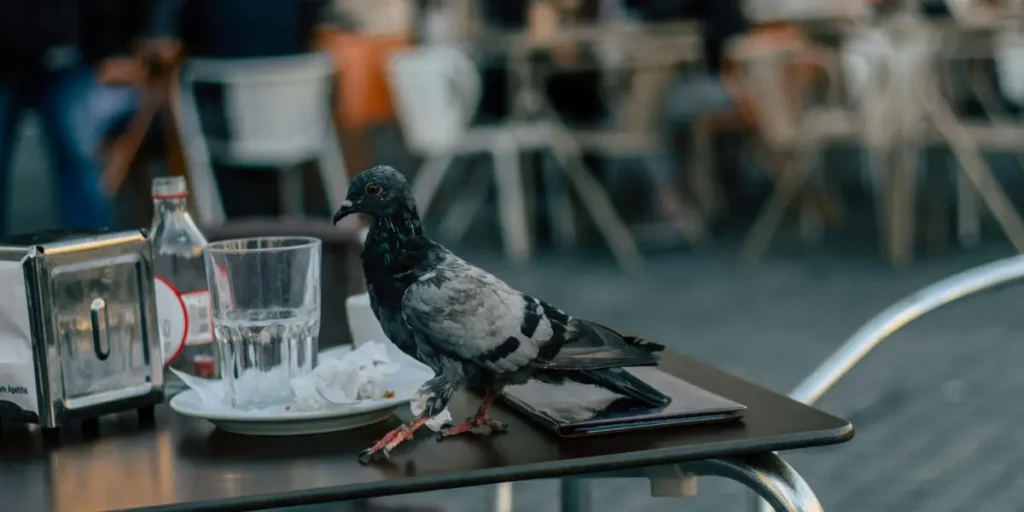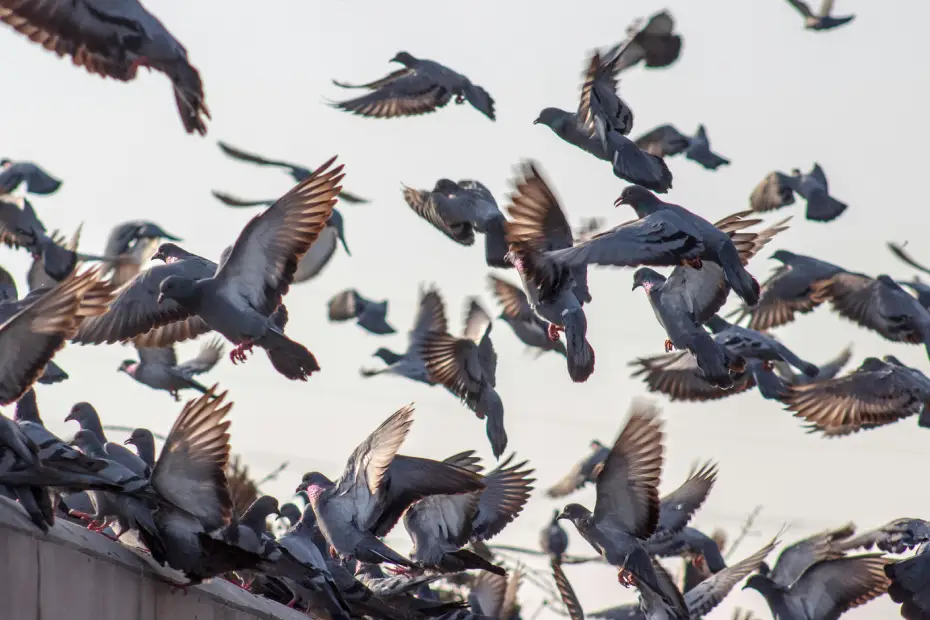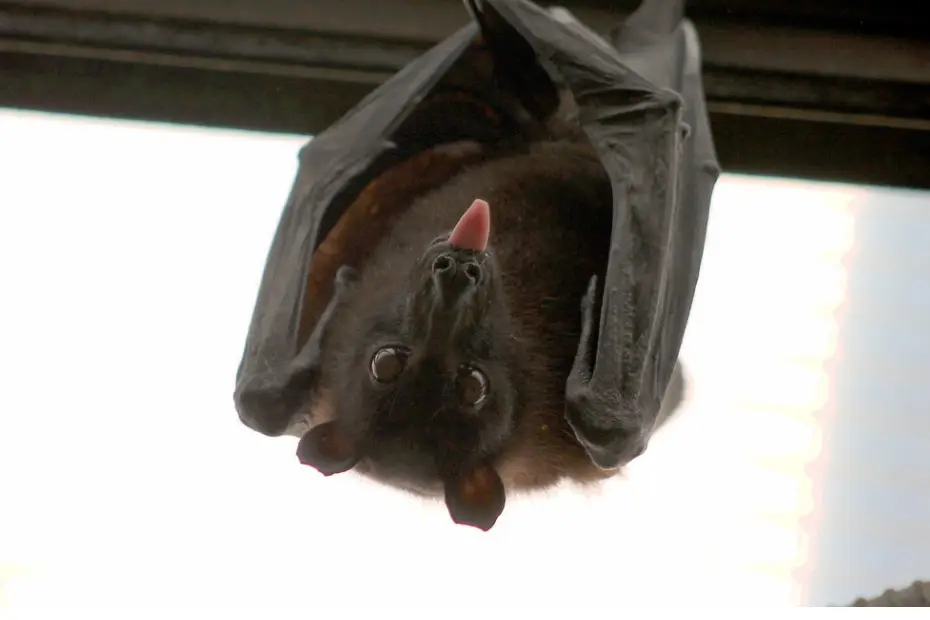Table of Contents
The Pervasive Pigeon Predicament
Pigeons, sometimes referred to as “rats with wings,” are an all too common sight in metropolitan settings all over the world. possibly though these birds seem innocuous, their abundance can be a serious annoyance and possibly a health risk. Effective management measures are necessary for pigeon concerns because of their unattractive droppings, which cause damage to buildings and public places, as well as the possibility for diseases to spread. This thorough article tries to clarify the problems caused by urban pigeons and provide you with useful tools to take back your areas from these avian enemies.
Understanding the Urban Pigeon Attraction
Why do so many pigeons fly to cities? The wealth of resources that urban settings provide holds the key to the solution. These sly birds are drawn to easily accessible food sources, such as food leftovers that are thrown away or purposeful feeding. Their presence in urban areas is further cemented by the various nooks and crannies found in buildings and structures, which make perfect roosting and nesting locations.
The Pigeon’s Price: Unveiling the Problems
Uncontrolled pigeon populations have considerably more negative effects than just aesthetic ones. In addition to being ugly, their droppings pose a number of health hazards. They may contain pathogens such as salmonella, E. Coli, and histoplasmosis, which can be harmful to people’s health, particularly in individuals with weakened immune systems. Moreover, pigeon roosting areas and nests can clog ventilation systems and gutters, resulting in water damage and possible fire concerns. The constant fluttering of wings and cooing can also be a source of noise pollution, which disturbs the quiet of city life.
The financial cost of pigeon issues is likewise high. Building materials may be corroded by their droppings, requiring expensive maintenance and repairs. Pigeon infestations are especially bad for businesses since they can drive away clients and damage a company’s brand.

Effective Pigeon Control: A Multifaceted Approach
Pigeon management calls for a multifaceted strategy that incorporates a variety of control techniques. The following are a few of the best tactics to think about:
Bird Netting: Creating an Impenetrable Barrier
Pigeons are physically prevented from entering some locations, such as courtyards, rooftops, and balconies, by bird netting. It is an adaptable and compassionate approach that provides continuous defense against pigeon incursions. In order to accommodate diverse bird species, the netting is usually built of sturdy materials like stainless steel or polyethylene and comes in a variety of mesh sizes.
When properly constructed, bird netting preserves the building or structure’s aesthetics by being almost invisible. Nonetheless, expert installation is necessary to guarantee its efficacy and keep birds from being entangled. In order to ensure that its integrity is not compromised by any damage or gaps, regular maintenance is also required.
Bird Spikes: A Prickly Deterrent
Another successful method of deterring pigeons from landing or perching on ledges, window sills, and other surfaces are bird spikes, commonly referred to as anti-roosting spikes. Pigeons seek out other areas because these spikes make the landing zone uncomfortable and unsteady.
There are several materials available for bird spikes, including as polycarbonate, stainless steel, and plastic. The material selection is based on the intended level of durability and the particular application. Even though bird spikes usually don’t hurt birds, they still need to be put properly to prevent injury.
Bird Repellents: Discouraging Pigeons through Sensory Aversion
Pigeons are kept away from particular regions by using visual, aural, or taste stimulation in bird repellents. Pigeons are scared away by visual repellents including reflective tape, scare-eye balloons, and holographic bird diverters that give the appearance of movement or the presence of a predator. Distress cries or ultrasonic devices are examples of auditory repellents that produce noises that are inaudible to humans but unpleasant to pigeons. Pigeons find treated surfaces unpleasant to land on, which deters them from returning. Taste repellents are frequently in the form of sticky materials or chemical repellents.
Depending on the type, application, and duration of the pigeon problem, bird repellents might have varying degrees of success. It is crucial to select repellents that are safe for the environment and for people, and to apply them according to the manufacturer’s directions.

Trapping and Relocation: A Humane Approach
Pigeons are trapped using humane traps and then released in a suitable place away from cities as part of a relocation and trapping operation. This technique is frequently used to cope with an especially difficult pigeon infestation or when other deterrents have failed. But when it comes to catching and moving wildlife, it’s important to follow the law and ethical principles.
To ensure compliance with legislation and to reduce the stress on the captured birds, it is advisable to check with local wildlife authorities or pest management professionals prior to implementing trapping and relocation.
Habitat Modification: Making Your Space Less Inviting
Through the removal of food sources, the sealing of building entrances, and the reduction of roosting and nesting locations, habitat modification seeks to make the surrounding area less appealing to pigeons. Pigeons can be deterred from appearing by taking simple steps like managing waste properly, not feeding them, and keeping areas tidy and clear of clutter. They can be kept out of possible nesting and roosting locations by caulking gaps and crevices in buildings, covering chimneys, and clearing standing water.
A sustainable and proactive method of controlling pigeons, habitat alteration emphasizes long-term prevention over short-term fixes.
Professional Pest Control: Expert Assistance for Severe Infestations
It could be essential to hire a pest control company if you have serious or ongoing pigeon issues. Professionals in pest control has the knowledge, tools, and resources necessary to put into practice thorough pigeon control plans that are customized to meet your unique requirements. They can also offer helpful guidance on how to prevent infestations in the future.
Selecting a reliable, licensed supplier with experience controlling birds is crucial when picking a pest control firm. Before making a choice, get bids from many businesses, find out about their procedures and warranties, and read client testimonials.
Prevention is Key: Long-Term Pigeon Management
Although the above suggested techniques can successfully handle current pigeon issues, prevention is the key to long-term pigeon management. You may drastically lower the chance of repeat infestations and keep your area free of pigeons by taking proactive preventive action.
Appropriate waste management is one of the most important preventive strategies. Make sure food scraps are disposed of appropriately and that trash cans are shut tightly. Food should never be left outside as this can attract pigeons and other pests. This is especially true for balconies and rooftops.
Discourage intentional feeding of pigeons is another crucial step. Although feeding pigeons can appear innocent, it actually serves to increase their reliance on human-provided food sources and promotes their concentration in metropolitan areas. Encourage responsible bird feeding practices and inform the public about the drawbacks of feeding pigeons.
Pigeon prevention also requires keeping areas tidy and free of clutter. Sweep and clean outdoor spaces frequently, get rid of any trash or standing water, and trim overgrown plants that could serve as pigeons’ hiding place.

FAQs about Pigeon Problems and Solutions
Are pigeons dangerous?
Despite their generally peaceful nature, pigeons can be dangerous to your health because of the viruses they carry in their droppings. It’s crucial to keep your hands away from pigeon droppings and to wash your hands well after visiting regions where pigeons are common.
How can I get rid of pigeons on my balcony/roof/building?
Pigeons can be kept out of particular places by using a variety of techniques, such as habitat alteration, bird spikes, bird netting, and repellents. Professional pest control services could be required in extreme circumstances.
What are the legal implications of pigeon control?
Many areas have wildlife regulations protecting pigeons, and some control techniques can call either permits or licenses. Prior to putting into action any pigeon control techniques, it is crucial to investigate and abide by local legislation.
Are there any natural ways to repel pigeons?
Indeed, a number of natural repellents, including vinegar, spices (like chili powder and cayenne pepper), and essential oils (like peppermint, eucalyptus, and citronella) can keep pigeons away. Their efficacy can differ, though, and you might need to reapply them after a lot of rain or wind.
How can I prevent pigeons from returning?
Removing the things that first draw pigeons is the key to keeping them from coming back. This entails managing garbage appropriately, refraining from feeding pigeons, keeping areas tidy and clear of clutter, and putting long-term preventive measures in place such habitat modification and bird deterrents.
Conclusion
In metropolitan locations, pigeon issues can be a serious annoyance that negatively impacts both companies and residents’ quality of life. Pigeon populations can be managed and their harmful effects reduced by comprehending the factors that draw them to urban areas and putting appropriate control and preventative measures in place.
Recall that proactive and diverse management is essential for effective pigeon control. You may reclaim your areas from these feathered pests and create a more harmonious urban environment by combining different measures including bird netting, bird spikes, bird repellents, habitat modification, and professional pest management when necessary.
Do not be afraid to get professional assistance if you are dealing with pigeon issues that are always bothering you. Professionals in pest control can evaluate your unique circumstances and suggest the best courses of action to meet your goals.



